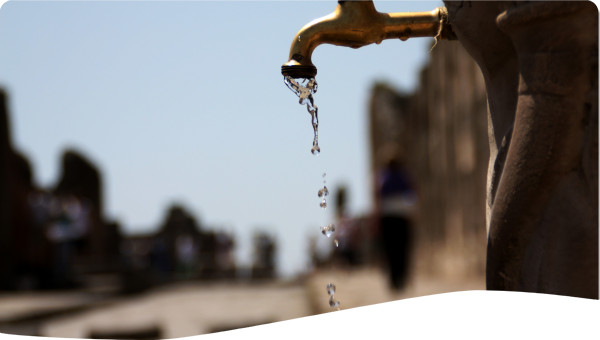The city of Jabalpur experienced water shortages. Action was taken through a scheme, which would augment the water supply to the city, by substantially increasing funding. The key lesson is how an empowered local body can respond to water challenges in a successful manner.
Jabalpur, a city of about 1.2 million people, is situated in an area well provided with water resources, being fed by two reservoirs, Khandari and Pariyat, the rivers Gaur and Narmada as well as a number of hand pumps/tubewells. The Jabalpur Municipal Corporation (JMC) manages the drinking water supply and the current water available from all sources is about 28 mgd. Out of this 4 mgd is supplied to bulk consumers including various manufacturing units. Thus the remaining 24 mgd works out to a supply of 20 gallons per day per capita, which is well below the per capita standards for the country. This is due to expanding population but lack of commensurate increase of water supply. The two reservoirs as well as the Gaur river cannot be exploited any further, so that the only potential source of water supply is the river Narmada, which is fortunately located quite close to the city so that minimal pumping is required to get the water to the city. It may be added that overexploitation of groundwater resources has led to rapid fall in groundwater levels, and now the needs of substantial parts of the city have to be met by water tankers. During summers the number of tanker trips increases to around 250-300 trips per day. The present water charges, fixed in 1997-98 as per the directives of the state government, were uneconomical and were uniform irrespective of quantity of water consumption in the absence of proper metering.
In 2000-2001, the operational expenditures stood at Rs 130 million whereas the water charges were Rs 80 million, out of which only Rs 56 million was collected on account of collection inefficiency.
From January 2000, the corporation decided to give priority to completion of the scheme. The project cost was around Rs 130 million, which included the state government share of Rs 34 million. The corporation approached Housing and Urban Development Corporation (HUDCO), a central government financial undertaking, for a loan of Rs 96 million in 2001. On account of the good terms of the Mayor with the state political leadership, the state government immediately disbursed its share.
On submission of the project report, HUDCO asked for a guarantee from the state government for repayment and a unambiguous resolution from the Corporation indicating how water charges would be increased to ensure repayment. Though no systematic survey was conducted, the general perception through interaction with individual citizen revealed that the consumers were willing to pay more to get better water services.
The Corporation did not agree to any kind of an increase for residential consumers and only a token increase for commercial consumers, as they were afraid of repercussions of increased charges on their vote bank. The state government asked the corporation to reconsider its stand. This time the corporation agreed to an increase in water charges for commercial consumers but not for residential consumers.
In spite of the corporation’s stand, the HUDCO agreed to sign the loan agreement in October 2002 with the Municipal Corporation conditionally on the corporation securing the state government guarantee. The state government on pursuance by the Mayor gave the guarantee in January 2003.
HUDCO has started making disbursements from October 2003. The project is nearing completion now. However, water charges have not been increased in 2002-2003 or 2003-2004.
The Public Health Engineering Department (PHED) division as per specifications has executed the remaining works without any major cost escalation despite delay in project completion. However, water charges have not been increased in 2002-2003 and 2003-2004.
The Narmada Phase-III scheme on completion will cause augmentation of water supply from 20 gallons per capita per day to 30 gallons per capita per day. The JMC has the staff for maintenance of the existing as well as the augmentation scheme. There will be no need for increase of man power but capacity building of the technical staff as well as improvement in collection of water charges are required, otherwise the deficit would increase due to the running of the augmented facility.
In an unmetered water supply scenario, across board subsidy of water charges benefits the richer consumers more than others since they have more availability of water due to more storage capacity on the same monthly fixed charge per connection.
Elected bodies lack the willingness to increase charges since they are afraid of backlash affect of the decision on their vote bank. The public is willing to pay provided reasonable services are made available to them.
The state government did not insist on economically sustainable water charges while issuing the state government guarantee. Thus a fully competent local body did not have to take a decision which could have marked a beginning towards financial self sustainability.
 Case studies
Case studies

